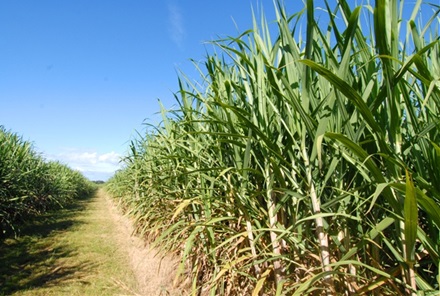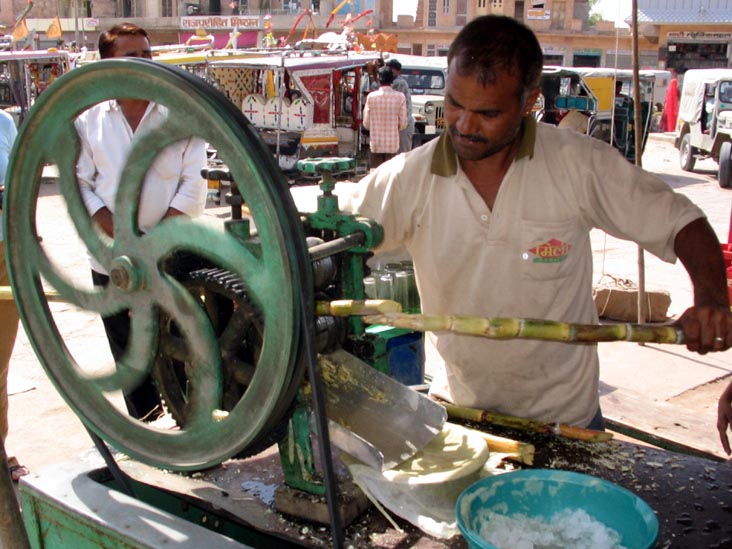- Home
- Blog
- Carbs, Sugars and Fibres
- 7 types of sugar - which is healthier?
7 types of sugar - which is healthier?
Written by Catherine Saxelby
on Wednesday, 11 December 2013.
Tagged: diabetes, GI, glycemic index, healthy eating, sugar

Last week on the radio, the announcer asked me if there was a 'good' sugar – one that would satisfy her sweet tooth but that was 'healthier' than regular white sugar. She figured if there were 'good' carbs and 'bad' carbs there must be some sugars that would get the nod of approval from nutritionists.
So I thought it might be helpful to list the many different types of sugar and whether they're any healthier for you or not (spoiler: there's not much between them). Here's my run-down of the 7 key types of sugar:
Sugar means CANE sugar in Australia
Historically, sugar was the predominant sweetener in Australia and it came from sugar cane as opposed to European sugar which is extracted from the sugar beet.

Sugar cane grew prolifically in the hot coastal areas of northern Australia and was an important industry, with huge sugar mills and major ports for transporting the stuff to cities as well as exporting it overseas.
Various sugars in Australia come from sugar cane grass, which is milled and refined to extract the sugar. Sugar cane is crushed in the mill and the resulting juice is purified and then boiled to produce a thick syrup. From this syrup, raw sugar crystals are extracted, usually via centrifuge, leaving a dark, sticky liquid called molasses behind.
 If you've ever been to a fresh food market, you can watch a vendor feeding lengths of cut cane between two rotating drums that press and squeeze out the natural sweet juice it contains. With a few ice cubes, this makes a sweet pleasant juice on hot days – one can see how the ancient people would have noticed and desired the sugar from this sweet tall grass.
If you've ever been to a fresh food market, you can watch a vendor feeding lengths of cut cane between two rotating drums that press and squeeze out the natural sweet juice it contains. With a few ice cubes, this makes a sweet pleasant juice on hot days – one can see how the ancient people would have noticed and desired the sugar from this sweet tall grass.
7 sugars compared
1. White granulated sugar is one of the world's purest foods. It's 99.9 per cent sucrose, refined from the natural sugars that occur in the sugar cane but with all 'impurities' such as mineral ash and polyphenols completely removed.
2. Caster sugar has the same composition as granulated sugar, but the crystals are smaller so it dissolves quickly. It's best for baking, especially light sponges and meringues.
3. Icing sugar is white sugar ground to a fine powder so it dissolves quickly and makes smooth icing.
All three sugars have the same moderate
Glycemic Index or GI of 65,
which is much lower than pure glucose at 100.
4. Raw sugar and coffee sugar crystals are made from cane juice and are golden in colour. In nutrition, they are virtually identical to white sugar - at 99 per cent sucrose, they have a few minerals but not enough to give a great health advantage over white sugar.
5. Brown sugar contains 95 per cent sucrose and 5 per cent molasses, which adds a lovely toffee flavour and moistness but no great nutritional benefits over white sugar. The same applies to muscovado, demerara, rapadura and black sugars which are often preferred for baking. There's a little potassium, calcium, magnesium and other minerals but they're not present in great quantities. Well, not enough to make me sit up and take notice when I'm only consuming a teaspoon here and there.
Sugar compared to fructose and glucose powder:
6. Fructose powder contains the same kilojoules as sugar but, being slightly sweeter, can be used in smaller quantities to achieve the same degree of sweetness. Now marketed as a 'natural cane sugar-free' sugar replacement, it has a low GI of anywhere from 15 to 19 which used to be its unique selling proposition.
Fructose is metabolized differently to sugar and glucose and doesn't trigger the hormones that regulate appetite – which some research suggests means that it's much MORE likely to be converted into body fat. Note too that it has other drawbacks, such as causing abdominal discomfort.
Brands of fructose: Fruisana and Sweetaddin.
7. Glucose powder is a white crystalline powder with a GI at the maximum of 100. It is the standard by which other carbs are ranked. At 100, this means that glucose is rapidly absorbed into the bloodstream and stimulates a fast insulin response. Glucose powder is not as sweet as regular white sugar so is fed to invalids as they can take in more food without being put off by the excessive sweetness.
Athletes often notice glucose (under the term dextrose so you don't associate it with glucose or sugar!) marketed to them to use when they need instant energy. Like glucose jelly beans, it will quickly raise blood glucose levels and replenish blood glucose. Glucose is the simplest form of sugars and is the sugar in blood, your body's primary source of energy.
Brands of glucose: Glucodin and Glucose-D.
Kilojoules, sugars content and GI rating for 7 sugars with glucose powder and fructose powder as comparison
(listed in descending order of GI value)
| Sugar |
Kilojoules |
% sugars |
GI |
| Glucose powder | 1700 | 97 | 100 |
| White sugar | 1700 | 100 | 65 |
| Caster sugar | 1700 | 100 | 65 |
| Icing sugar | 1700 | 100 | 65 |
| Raw sugar | 1700 | 99 | 65 |
| Demerara sugar | 1690 | 99 | 65 |
| Coffee crystals | 1690 | 99 | 65 |
| Brown dark sugar | 1630 | 96 | 65 |
| Fructose powder | 1700 | 100 | 15 |
Source: Food manufacturers' NIP on pack, except for GI values from the website.
Nutrition facts for white sugar
Per serve:
One level teaspoon white sugar or 4 g supplies 68 kJ (16 Calories), no protein, no fat and 4 g of carbohydrate, 4 g of sugars, 2 g fructose and 2 g glucose.
Per 100 grams:
1700 kJ (310 Calories), no protein, no fat and 100 g of carbohydrate, 100 g of sugars, 50 g fructose and 50 g glucose.
Bottom line
Despite their different colours and flavours, the nutritional value of these sugars is very similar. Sugar is sugar, whether white, brown or raw. All sugars are pretty much of a muchness. One teaspoon of any has around 68 kilojoules (16 Calories).
They are all sources of sucrose OR glucose OR fructose OR combinations of these three but very little in the way of vitamins, minerals or antioxidants.
Dietary guidelines around the globe suggest we LIMIT consumption of sugar and foods with added sugars. You don't need to avoid sugar completely for good health, but it's sensible to cut back on foods that are correspondingly low in nutrition and easy to overeat – soft drinks, lollies, pastries or sweets, for example.
Foods such as flavoured yoghurts or flavoured milks have a better nutrient profile and give you important nutrients (protein, calcium) along with the sugar they contain.
Use only small amounts of sugar to enhance the flavour of nutritious foods - a spread of jam on grainy bread, a sprinkle of sugar over high-fibre cereal or a sugar syrup to poach fresh fruit. But watch the large intakes that come from soft drinks, juices, confectionery, chocolate, ice creams and pastries.
Foodwatch
The Good Stuff
The Boring Stuff
© 2025 Foodwatch Australia. All rights reserved
Website by Joomstore eCommerce





